Ubuntu 26.04 LTS will make snaps unavoidable
Canonical’s vice-president for engineering, Jon Seager, gave an interview to The Reg.
The news are all bad, although some of the bad things won’t happen that soon. But I’m saddened and angry at the same time.
Snaps all over the place!
Jon Seager:
I will start by saying my personal opinion is that, medium to long term, the default Ubuntu that people will use will be a Core Desktop. I don’t know exactly when that will happen. It certainly won’t be for 26.04 or even 28.04 – this is, say, a five to ten-year thing, but I think there will come a point where, if you go to
ubuntu.com/downloadand you click “download Ubuntu Desktop,” that will be a Core image. There will be an option to download some kind of “Ubuntu classic,” which is Ubuntu as we see it today.
This guy is “something of an immutable Linux bore” (his words, not mine).
On the snap side…
Right at the core of this is
snapd. That’s still being very actively developed. One of the things that we’re working on that will have a bigger impact on Core Desktop is permissions prompting. … Permissions prompting is going to introduce the sort of mechanism people have become used to on iOS and Android and macOS, where you download a Snap, and when you click a button that means it needs to use your camera, the app will be suspended, and a prompt will come up and say, this app is trying to use your camera. Do you want to allow it to or not? So we can still distribute binaries that are confined, and can’t access things by default, and we can basically say to the user, “it’s up to you to allow them to use your camera.” Let them make a judgment call. That’s critical for us to land Core Desktop, because in Core Desktop, there are no “classic” (unconfined) snaps. So while there hasn’t been a huge amount of progress on Core Desktop itself, lots of fundamental mechanisms are actually being worked on every day.
Apocalypse NOW!
We have a roadmap. One of the things we’re looking at for 26.04 is shipping Pipewire as a Snap on the desktop. Now this is a bit of a risky move, because there is a crowd of people who love to say that the first thing they do on Ubuntu is remove
snapd, and if they do that on this future release, they’ll have no sound. Why start with Pipewire? Well, it interacts with things like cameras, so it would allow us to more easily backport support for newer cameras and speakers to Ubuntu. Pipewire is a user-space daemon: it normally runs as asystemduser unit. With Snaps, we get automatic management ofsystemdunits. We had to do a bunch ofsnapdwork for Core Desktop anyway, and I see this as another thing that we are doing on the way to Core Desktop.
Oh, so 24.04 will have been the last LTS that can be “de-snapified”!
This isn’t the way Ubuntu will ever replace Windows on the desktop! First, the stupidified GNOME, which is Red Hat’s doing. Then, snaps.
The issue has been discussed in the comments section of Linux Mint’s Monthly News – October 2025, starting here.
Clem:
If Ubuntu no longer uses pipewire natively, we’ll keep an eye on it and make sure it works. It won’t be the first component we don’t have in common and it won’t be the last.
So Mint will diverge more and more from Ubuntu, with even more different packages.
OTOH, the new Cinnamon Menu shown in the monthly news looks nice, were it not for the depressing Mint icons. Ugly and rounded, as if designed with the Asian mindset.
Is Debian the way to go?
Ugly as it is, LMDE 7 is not that bad, provided that you like Cinnamon (I don’t). On the other hand, if I have serious objections to the way the changes in Mint are slaughtering some Ubuntu packages (for instance, breaking certain customizations of MATE and XFCE), LMDE 7 provides some welcome additions to Debian (I’m thinking of those Mint XApps).
When will the new menu arrive on lmde7, installed lmde7 few weeks ago just for that.
Clem:
In about 2 months. New features are backported into LMDE after each Mint release.
OK, sometime after Mint 22.3, then.
One way the Debian-based world to have a future would be to have better Debian derivatives.
Unfortunately, as KDE6 is a fast-moving target, with frequent changes and bug fixes, it would require basing on Debian testing, not stable. But Debian testing doesn’t always get security patches as fast as Debian stable.
Even LXQt fans should rather prefer Debian testing, because Debian stable’s other name is “Debian stale.” Well, it’s an LTS distro, after all.
But none of Debian’s live flavors for 13.1 is polished enough, IMHO. The KDE Live ISO is OK, I guess. MATE and XFCE are ugly. As for LXQt and LXDE, let’s take a look.
One of the reasons LXDE should not be used on a laptop, other than the fact that it’s practically dead, is that it cannot adjust the screen brightness. And a laptop doesn’t have physical buttons for that: the keyboard Fn-brightness should trigger something in software, except that LXDE couldn’t care less!
LXQt has devised lxqt-config-brightness:
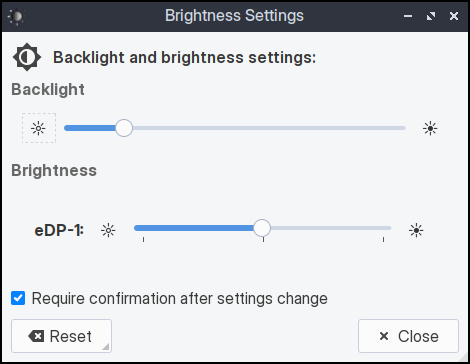
LXQt’s lxqt-config-brightness dialog box shows two sliders: Backlight and Brightness (eDP-1). I didn’t even know they’re two ways of adjusting a laptop’s brightness!
- The Fn-brightness keys actually change the Backlight, which works by adjusting the physical LED panel’s light output via
/sys/class/backlight/*. - The Brightness (eDP-1, HDMI-1, etc.) slider is a software-level gamma/contrast adjustment using
xrandr(in X11), changing how colors are rendered without altering the panel’s actual backlight. This needs to be reimplemented for Wayland.
Then, any decent distro is expected to intercept Fn-brightness or, if it doesn’t, this utility can be manually launched. Lubuntu intercepts a laptop’s brightness keys, but not every distro does.
Now, to the point:
- debian-live-13.1.0-amd64-lxde.iso is butt-ugly, and it offers no way to change the brightness in a laptop.
- debian-live-13.1.0-amd64-lxqt.iso is better looking, but it doesn’t care about the Fn-brightness keys, so LXQt’s utility must be used instead.
- Fedora-LXDE-Live-x86_64-43-1.6.iso is almost decent, but of course it offers no way to change the brightness.
- Fedora-LXQt-Live-43-1.6.x86_64.iso is catastrophically unconfigured (menu and shit), and its configuration tool cannot adjust the brightness, but only the backlight! This is what you actually need to adjust, but it’s one of the way that illustrates how little care is given to the spins, especially now that KDE has been promoted to “official.” I’ve tried all the spins, and most of them are half-broken from a usability standpoint!
But Fedora, as I said, stopped being an option. Jesse Smith:
The biggest problem with this release though is definitely the slow, CPU-intensive system installer. It makes the CPU run hot, even when it’s idle, it has almost no disk partitioning and swap options, and it is painfully slow. I didn’t think it was possible for Fedora to introduce a system installer I would like less than its previous version of Anaconda with its inconsistent menus and strange hub screens, but at least that installer had options. This installer has fewer options, it is slower, and its flat design is less attractive. I think it’s nice to see Fedora return to a sequential install experience, but this feels like one step forward and three backwards.
Moving on, Sparky Linux (sparkylinux-8.0.1-x86_64-lxqt.iso) is moderately ugly, and the welcome screen and the corresponding utilities are driving me away much more than MX’s tools. That’s based on Debian stable, but the rolling edition, based on Debian testing, looks and behaves identically. It ignores the Fn-brightness keys, but LXQt’s utility can be used instead.
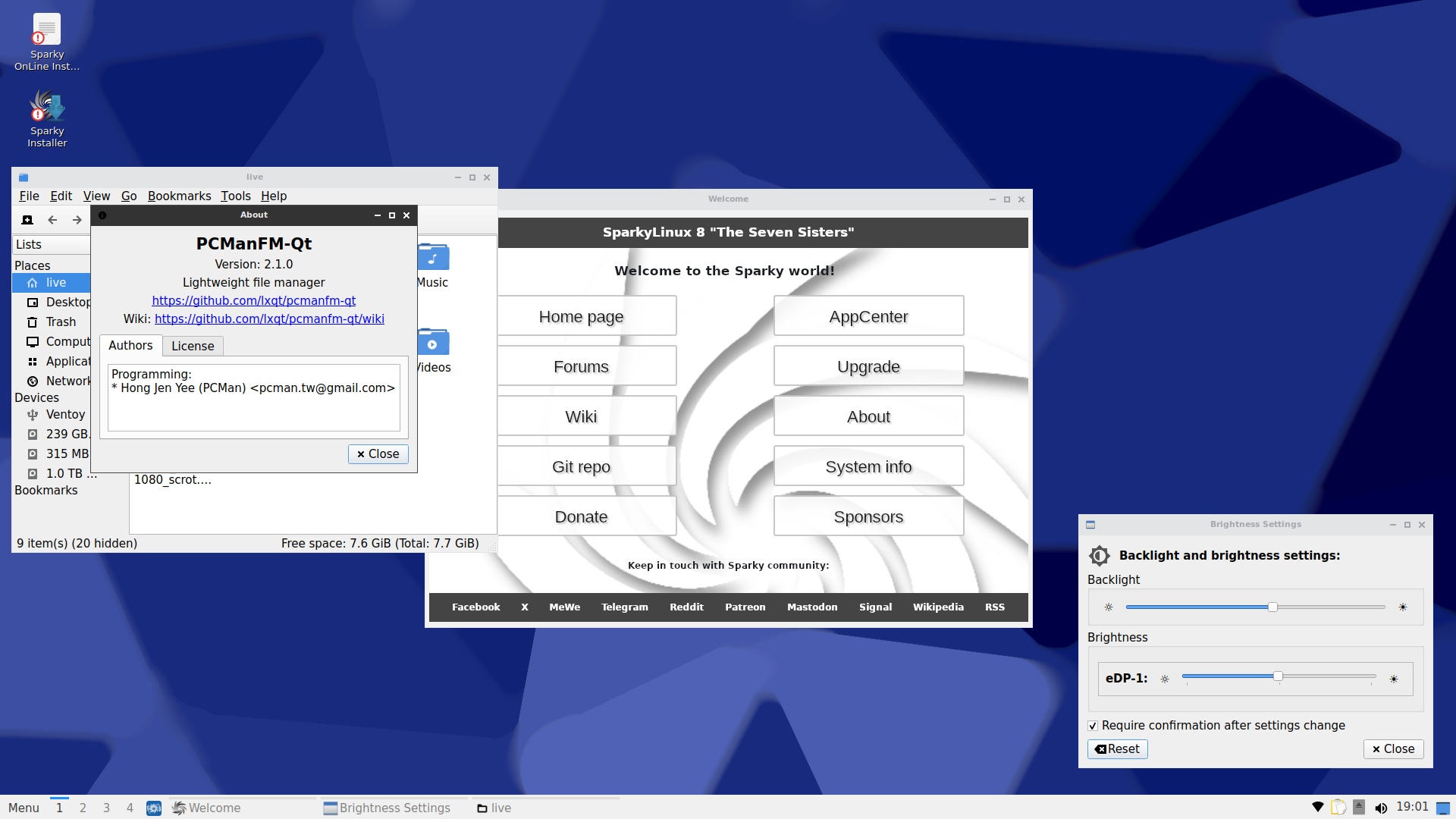
Lubuntu is still the best choice for LXQt!
Should we stop hating snaps?
The more I want to keep at least one laptop with Linux, the more I feel like this is impossible in the long run!
Yes, of course, Microsoft’s lack of quality control is out of control, but here’s one of the 114 comments to that article in The Reg:
My desktop computer runs Linux Mint. I recently upgraded it to the latest release, at which point my nice Brother DS620 scanner stopped working After some digging I gather that this is because its drivers depend on
libsane, andlibsanehas been renamed tolibsane1, breaking everything which needed it. All I have to do, it seems, is examine the .deb for the drivers, change all reference tolibsaneinto references tolibsane1, repackage and reinstall.What business is ever sensibly going to trust a system which creates these hoops to jump through? OK, Linux is not as bad as Windows, but it’s still shit.
Everyone who doesn’t run the retarded main Ubuntu flavor seems to be running Mint! To some, “Mint is the new Ubuntu” (and Cinnamon is “the only fix to GNOME”), but let me remind you why running a Debian derivative or even an Ubuntu flavor or derivative is preferable to running Fedora, Arch, Manjaro, or something else. It’s because you will encounter something like that:

Oh, and Dedoimedo keeps criticizing Linux:
I upgraded the iPhone 11 to iOS 26, and boom, the iPhone wouldn’t mount in Kubuntu 24.04 any longer. To be more precise, the file manager, Dolphin, would show the device in the side bar, but any mount option, view option or anything alike would either result in an error of some kind, or nothing at all would happen. Awfully dejecting.
…
I am quite unhappy with the erratic, on-off support for the iPhone in Linux. If there’s one thing worse than no support, it’s broken, inconsistent support, because if the user expects/believes that they can do something, and then, at a critical moment, something doesn’t work, well. The same as my printing conundrum I outlined in my Slimbook report 9. Just when I needed to print documents, important documents, the system decided to misbehave. That’s horrible.
Luckily, it’s possible to remedy the iPhone mount issue, for now, but please, let me caveat this. One, I cannot guarantee things will work three or seven months from now. Two, I don’t know how consistent the functionality is even across different versions and flavors of Ubuntu

Oh, wait! The final version of MX 25 has been released! That is, if you like XFCE with a stupid vertical panel, or KDE (that defaults to using Wayland!) with a normal panel. A KDE frozen at version 6.3.6 just when KDE6 is changing at such a fast rate!
Oh, fuck, the XFCE edition has the same blue frame for the active window that I just disabled in Lubuntu! And the terminal is too transparent, because this is how retards like it. What’s wrong with people that they create such crap?! Also, even if I set the panel to be “Horizontal (Bottom)” via MX Tweak, I also have to change the “Tasklist plugin” from “docklike” to “Window Buttons” if I want window titles, not just dumb icons. What pissed me off was that I couldn’t find a way to disable that shitty blue frame! I might have lost my touch with XFCE, but MX is fucking with XFCE too much!
UPDATE: Mea culpa. The blue frame for the active windows is part of most “mx-” themes, inclusing the default ones. There are themes without this crappy blue frame.
One more distro that I don’t like. I had it installed in the past and I had issues with the CPU constantly going to 3.6 GHz for absolutely no reason (the system was idle, and it wasn’t even checking for updates) instead of staying at 800 MHz. Somehow, it used the performance governor. Again, for no reason at all. But hey, MX is the only distro that includes a tool specially designed to help you enable hibernation! What if it worked this time, even on this laptop?
🤔
I just started to like Lubuntu 25.10, so…
Maybe, just maybe, we should get used to snaps and stop disabling them! After all, we got used to systemd, didn’t we?
Which one will be the future?
- Ubuntu with snaps, regardless of the flavor.
- Linux Mint, including LMDE.
- MX Linux.
- Linux Lite 8.
- Windows 11.
Don’t even try mentioning that bloody fruit! It only runs on hardware provided by that company and no one else. Should I want Soviet-style communism, I’ll let you know by purchasing one of those pieces of shit. Don’t you stupidly drool over them: their reliability isn’t what it used to be, the keyboard sucks, the RAM and the SSD are soldered on the mobo, and they’re crappier than you’d expect them to be. One has to be completely non-technical or brainwashed to love them.

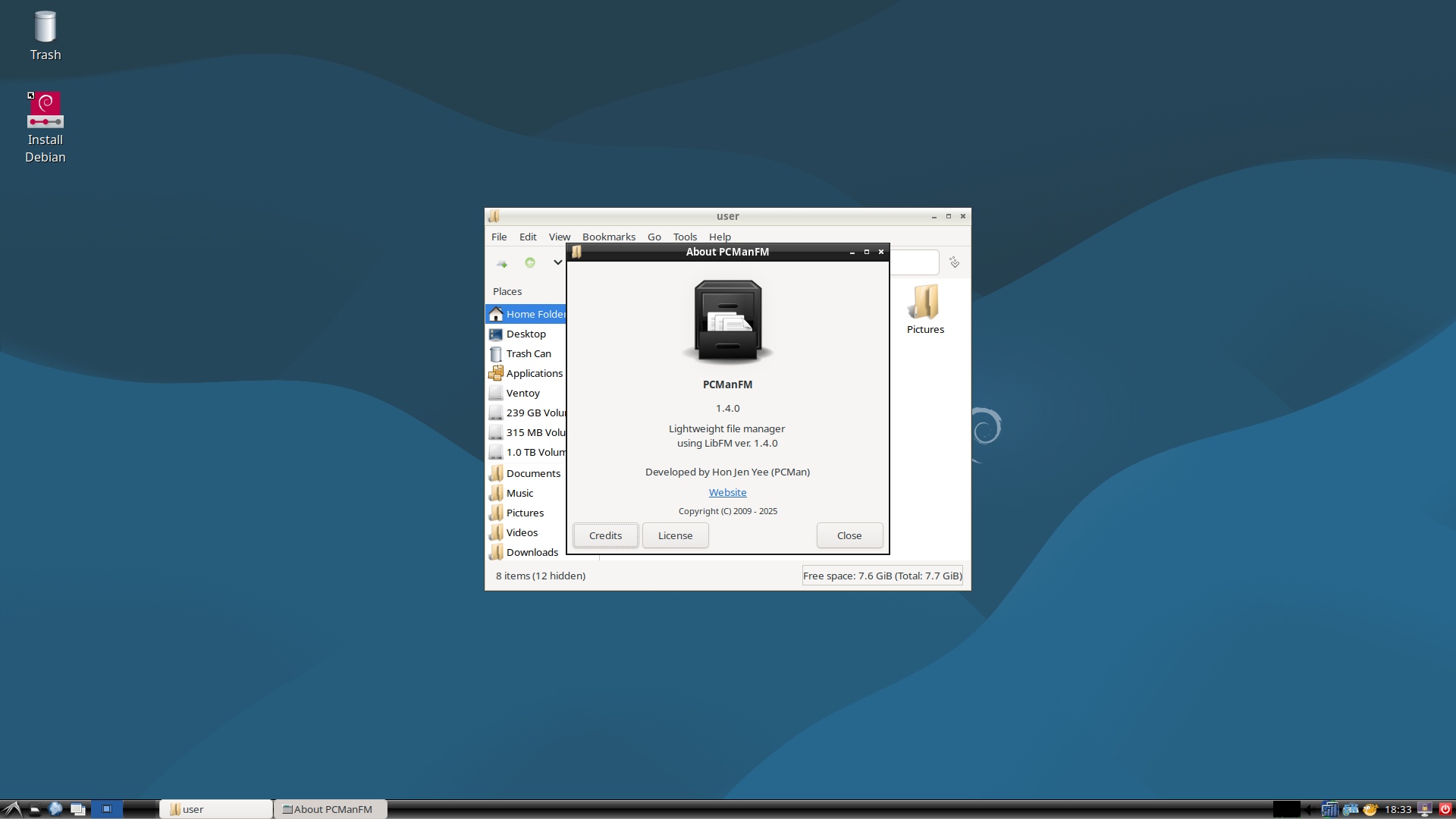
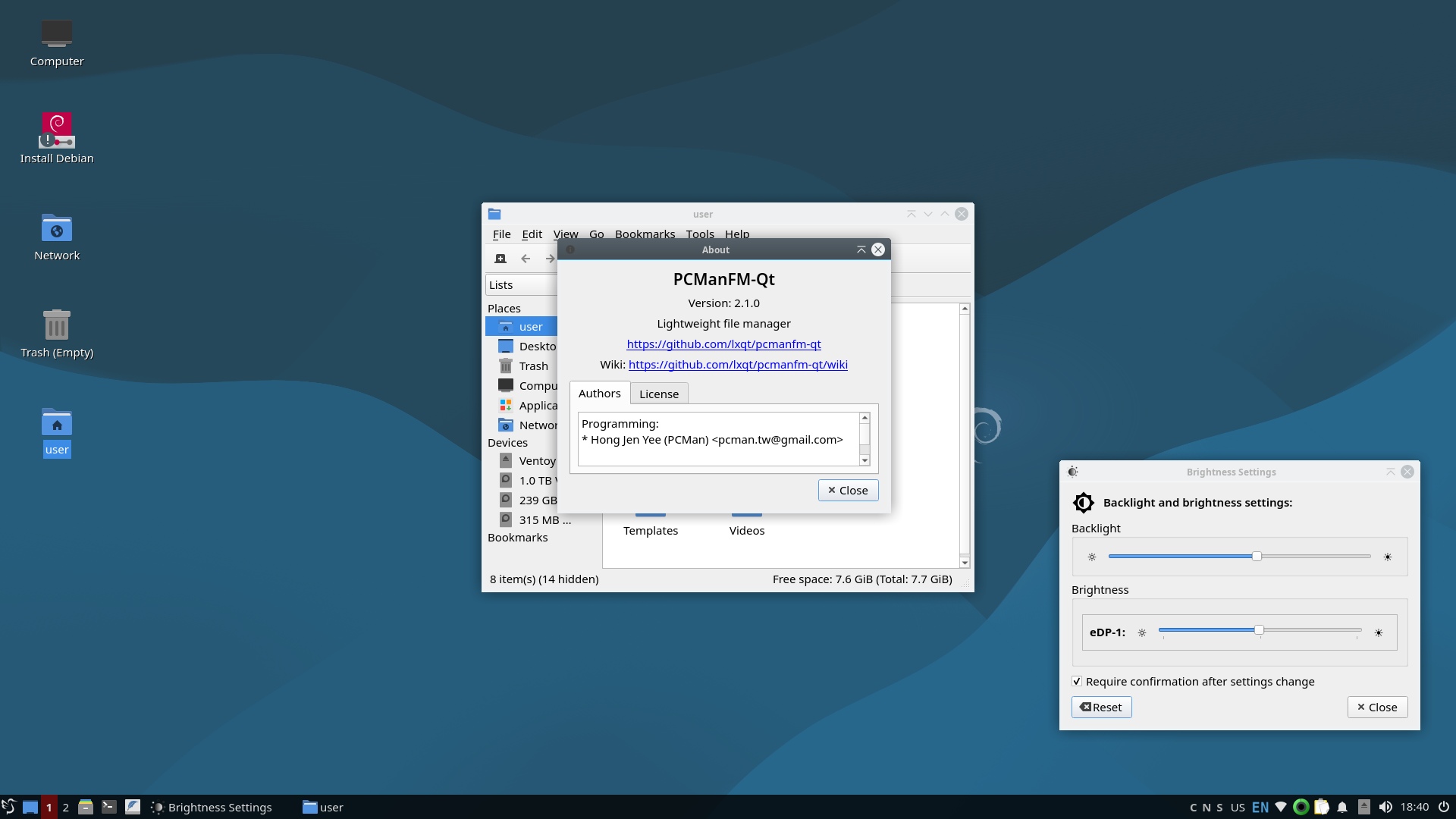

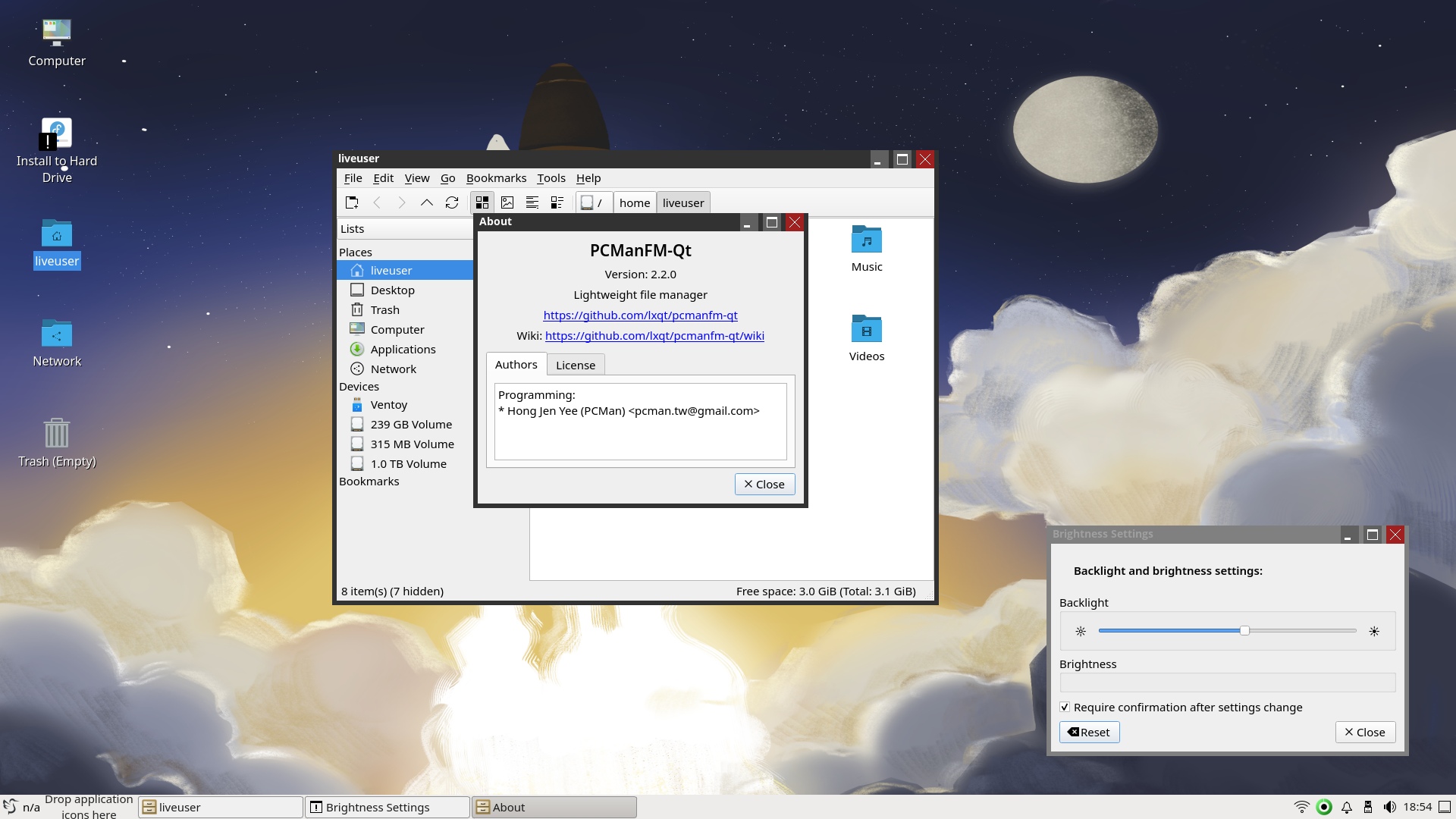
💻 I installed LMDE7 on the newer Acer, preserving
/home, as usual.As a live session, it worked fine. As an installed OS, I tried to add a few apps. It installed
mcandfeatherpad, then… IT STOPPED BEING ABLE TO ACCESS THE INTERNET!Disconnecting and reconnecting to the AP was useless.
Rebooting was useless. It connected to the AP, but could not reach the Internet!
💻 In the interim, because I still need Linux on this laptop for a while, I installed Ubuntu Cinnamon 25.10.
It doesn’t have Mint’s tools, and the distro maintainer has some strange preferences (
pidgin,alacritty), but the overall system became satisfactory after some quick customizations:● I replaced “Grouped window list” with “Window list” on the panel. This way, not only I can see window titles (this could be enabled in the other applet, too), but I can set a wider window button width (here, 240).
● In the calendar applet (a simple clock is not available in Cinnamon, as Mint uses a different shit), I customized the date format and replaced “%A, %B” with “%a, %b”.
● I made the GNOME apps that didn’t honor the dark theme by default, specifically GNOME Terminal and
gedit, to use the “Dark style” (gedithas several color schemes for each of light and dark styles, but “Solarized Dark” is just fine).● I uninstalled
gnome-system-monitorand installedmate-system-monitor, I replaced the command for the “System Monitor” icon, and I added the Ctrl+Shift+Escape shortcut for it.● I replaced the snap-based Firefox with the PPA-based one, so I could open my Firefox profile that was in
/homeand start using the laptop as if nothing happened.Nemo is usable “as is” because it can use a Compact View, the lack of which is the main reason I will never be able to use GNOME and its retarded Files!
Everything is better than Linux Mint or LMDE! (Everything but GNOME, this goes without saying.) So I shouldn’t have included “Linux Mint, including LMDE” in the list at the end of my post!
🪲 But I already found a bug in Ubuntu Cinnamon 25.10 that was not present in Lubuntu 25.10: once a BT mouse goes to sleep, it cannot reconnect to the laptop when it wakes up. Even right-clicking on the device in
blueman-managerand selecting “Connect” is useless: the device must be deleted and added again!🪲🪲🪲 I rebooted, and now I cannot log in! After accepting my password, Ubuntu Cinnamon crashes and it returns to the session greeter!
This is exactly why Microsoft can do ANYTHING to Windows, and 70% of the laptops and desktops will still be using Windows!
⚠️ Note that the Ubuntu MATE 25.10 ISO doesn’t detect any Wi-Fi adapter, even with this new Intel Wi-Fi/BT card. Zero quality control. Ubuntu MATE 24.04, 24.04.1, 24.04.2, 24.04.3 worked fine. The quality of Ubuntu’s 25.10 flavors has deteriorated, and with the reports I’ve seen about Fedora 43, it really looks that the quality in Linux is becoming abysmal!
Regarding your last point, that’s true, but 25.10 is not LTS, whereas 24.04 is. The latter is undoubtedly more refined and robust than a non-LTS version. Well, normally, anyway.
We’ll have to see if 26.04 will be better.
Regarding your screenshot of Ubuntu Cinnamon, it’s really… dark. I find it almost too dark, a little gloomy, lacking a bit of light. Dark themes are fine, but this seems a little extreme. A little depressing.
We should hope that LTS releases will always be more polished, but QA seems to be deteriorating.
Ubuntu Cinnamon can also be light! I was exploring its dark side 🙂
But nothing is more depressing than Linux Mint!
Oh, well, I made many more experiments last week, but I need time to document them, if I’ll remember the sequence of events.